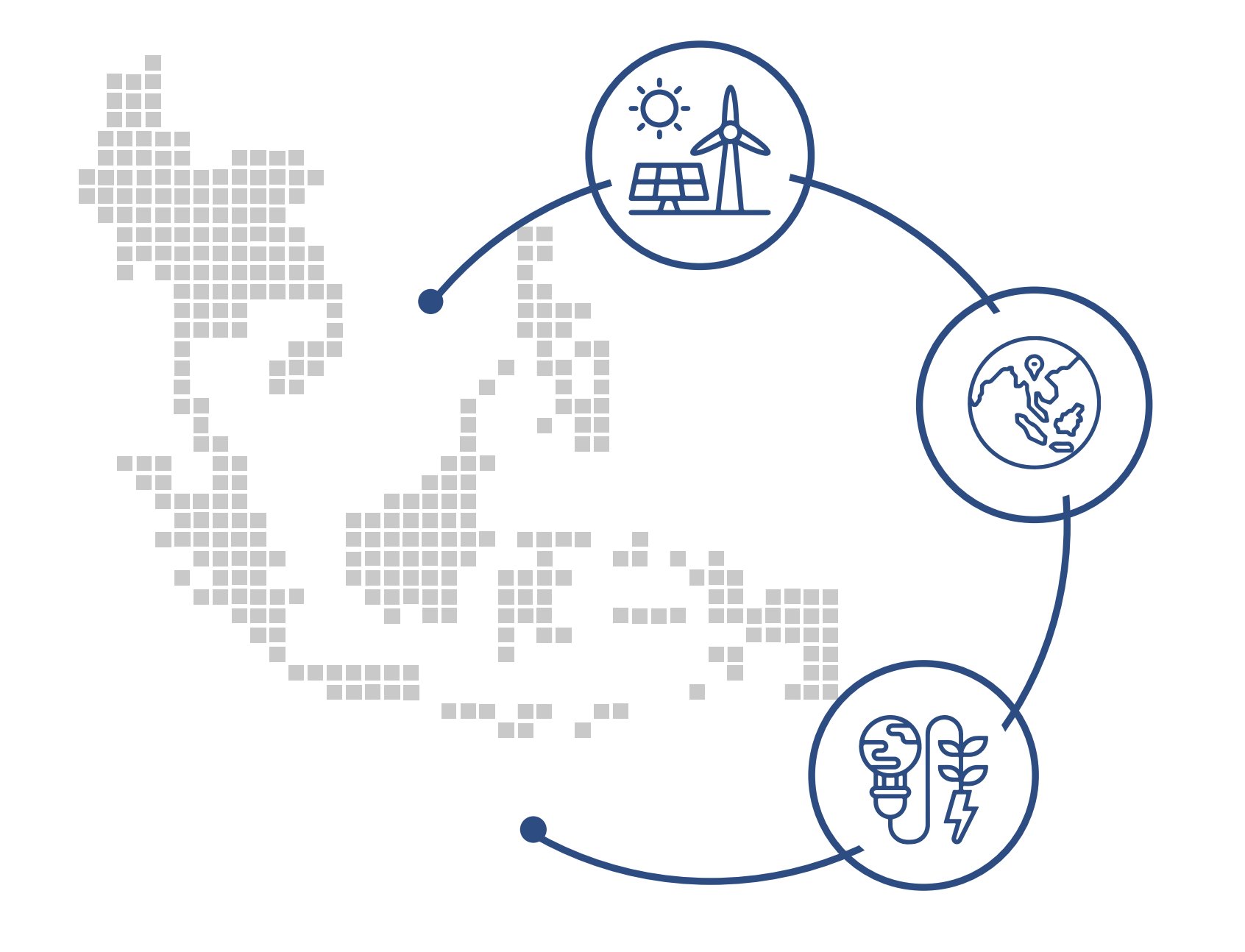As a result of global warming, carbon taxes and emissions trading policies are in the spotlight. However, lack of cross-country coordination can cause carbon leakage and increases in emissions. This column analyses the effectiveness of carbon taxes and border tax adjustment policies in reducing emissions and shaping firms’ decisions on abatement investment and firm location. It shows that a higher carbon tax can sometimes lead to higher global emissions and discourage investment in clean technology. Likewise, border tax adjustments should be designed carefully to ensure lower emissions and compatibility with WTO rules.
Global warming is one of the greatest concerns in the world. Global average temperatures increased by 0.85°C between 1880 and 2012. Rising global temperatures have been accompanied by changes in the climate causing extensive damage all over the world. As a countermeasure against global warming, carbon pricing has been attracting considerable attention. In particular, carbon taxes and carbon emissions trading are in the spotlight.
However, it is problematic that the various countries involved are not coordinating these countermeasures. A serious concern is cross-border carbon leakage, which undermines a country’s attempt to cope with changes in its climate. That is, carbon pricing in one country decreases carbon emissions in that location but may increase carbon emissions in other countries. It is possible for the latter to dominate the former and for global emissions to increase as a result. Another concern is that carbon pricing results in cost disadvantages for domestic firms in both domestic and foreign markets, which may lead to cross-border carbon leakage.
There are three main channels through which cross-border carbon leakage can arise. The first channel is through changes in a country’s industrial structure, as discussed by Copeland and Taylor (2005) and Ishikawa et al. (2012). When a country adopts emission regulations, the comparative advantage of the carbon-intensive industry could shift abroad. The second channel is the relocation of plants in response to emission regulations, particularly in carbon-intensive industries (e.g. Markusen et al. 1993, 1995, Kayalica and Lahiri 2005, Zeng and Zhao 2009, Ishikawa and Okubo 2011, 2016, 2017). Finally, the third channel is the changes in the price of fossil fuels (e.g. Bohm 1993, Felder and Rutherford 1993, Kiyono and Ishikawa 2004, 2013, Hoel 2005). A decrease in fossil fuel demand caused by emission regulations in one country lowers the global price of fossil fuels, boosting fossil fuel demand and, hence, carbon emissions in other countries.
To deal with the concerns above, carbon border adjustments (CBAs) have been proposed. Carbon border adjustments aim at avoiding the offset of emission reductions by increasing emissions outside the jurisdiction through increased imports of more carbon-intensive goods or relocation of production plants. Policymakers are particularly inclined toward carbon border adjustments when adopting carbon pricing within the jurisdiction. For example, Ursula von der Leyen, President of the European Commission, tweeted on 16 September 2020: “Carbon must have its price – because nature cannot pay the price anymore. We are working on a Carbon Border Adjustment Mechanism,”. The European Commission actually proposed carbon border adjustments on 14 July 2021. Note that there are various carbon border adjustment schemes. Some schemes include regulations on only imports such as carbon content tariffs. Some others allow exemptions from carbon pricing for exports to eliminate the cost disadvantage in foreign markets. Elliott et al. (2010) specifically call an emission tax that involves a tax rebate for exports as well as a tax on imports a ‘full’ border tax adjustment (BTA).
In the presence of different carbon border adjustment schemes, a legitimate question is determining how their effects vary. In a recent paper (Cheng and Ishikawa 2021), we theoretically explore the effects of a carbon tax and the effectiveness of BTAs in the framework of international oligopoly. Our oligopolistic setup captures the features of firms that emit a significant amount of CO2 such as blast furnace steelmakers and chemical manufacturers. We investigate and compare not only emissions but also firms’ decisions on locations and abatement investments under the three different policy regimes: (1) carbon taxes alone (no BTAs), (2) carbon taxes with carbon-content tariffs (partial BTAs), and (3) carbon taxes with both tax refunds for exports and carbon-content tariffs (full BTAs).
When firm locations are fixed, a firm’s strategic reaction to a carbon tax is to decide whether or not to abate emissions by adopting a clean technology. According to our findings, carbon taxes may not be effective in decreasing global emissions. Interestingly, high tax rates decrease the incentive to invest in abatement. This is because emission abatement lowers the tax per unit output but increases the output and hence the tax base. The former is a positive effect of emission abatement, while the latter is a negative effect. The positive effect outweighs the negative effect if the tax rate is low, and vice versa if it is high. This result clearly contrasts with conventional wisdom in line with the weak version of the Porter hypothesis in Jaffe and Palmer (1997) that stricter environmental regulations would induce firms to engage in abatement activities. We also show that abatement investment may make a carbon tax backfire even if the Porter hypothesis holds. That is, a firm’s abatement can increase global emissions and an increase in the carbon tax can increase global emissions with a firm’s abatement activities.
Another important message is that cross-border carbon leakage is eliminated with full BTAs, but global emissions can be greater with full BTAs than with no BTAs or with partial BTAs which partially eliminate cross-border carbon leakage. This is because the carbon-tax refund basically works as an export subsidy in the presence of carbon taxes. Thus, from the viewpoint of global emissions control, carbon leakage is not necessarily problematic. Moreover, the carbon-tax refund restores the competitiveness of the domestic firms in the foreign market but discourages them from making abatement investments.
When firm locations are endogenously determined, firms make decisions on both location and emission abatement. In general, firms are likely to produce abroad in the presence of a tough carbon tax in the domestic country. As a result, global emissions can increase. BTAs encourage firms to invest in emission abatement and discourage firms from producing overseas. This effect is stronger with full BTAs than with partial BTAs. More importantly, the relationship between the carbon tax rate and global emissions tends to be non-monotonic under BTAs. In particular, high tax rates do not necessarily induce foreign production. Depending on the parameter values, global emissions could be largest in the middle range of the tax rate.
Our findings suggest that carbon taxes should be designed with discretion, because their effects could be different from the conventional wisdom. In particular, carbon taxes are not very effective in reducing carbon emissions under certain situations. Moreover, BTAs should be applied cautiously. Even if BTAs eliminate cross-border carbon leakage and cost disadvantages of domestic firms, global emissions could increase. Thus, BTAs may become a disguised form of protection. The practicality of BTAs and their compatibility with the WTO rules should be deliberated carefully.
Editors’ note: The main research on which this column is based first appeared as a Discussion Paper of the Research Institute of Economy, Trade and Industry (RIETI) of Japan.
By Haitao Cheng, Post-doctoral fellow, Hitotsubashi University and Jota Ishikawa, Professor of International Economics, Hitotsubashi University and Faculty Fellow, RIETI
References
Bohm, P (1993), “Incomplete international cooperation to reduce CO2 emissions: Alternative policies”, Journal of Environmental Economics and Management 24(3): 258-271.
Cheng, H and J Ishikawa (2021), “Carbon Tax and Border Tax Adjustments with Technology and Location Choices”, Discussion Paper 21-E-030, Research Institute of Economy, Trade and Industry (RIETI).
Copeland, B R and M S Taylor (2005), “Free trade and global warming: A trade theory view of the Kyoto protocol”, Journal of Environmental Economics and Management 49(2): 205-234.
Elliott, J, I Foster, S Kortum, T Munson, F Perez Cervantes and D Weisbach (2010), “Trade and carbon taxes”, American Economic Review 100(2): 465-469.
Felder, S and T F Rutherford (1993), “Unilateral CO2 reductions and carbon leakage: The consequences of international trade in oil and basic materials”, Journal of Environmental Economics and Management 25(2): 162-176.
Hoel, M (2005), “The triple inefficiency of uncoordinated environmental policies”, Scandinavian Journal of Economics 107(1): 157-173.
Ishikawa, J, K Kiyono and M Yomogida (2012), “Is emission trading beneficial?”, Japanese Economic Review 63(2): 185-203.
Ishikawa, J and T Okubo (2011), “Environmental product standards in north-south trade”, Review of Development Economics 15(3): 458-473.
Ishikawa, J and T Okubo (2016), “Greenhouse-gas emission controls and international carbon leakage through trade liberalization”, International Economy 19:1-22.
Ishikawa, J and T Okubo (2017), “Greenhouse-gas emission controls and firm locations in north–south trade”, Environmental and Resource Economics 67(4): 637-660.
Jaffe, A B and K Palmer (1997), “Environmental regulation and innovation: a panel data study”, Review of Economics and Statistics 79(4): 610-619.
Kayalica, M Ö and S Lahiri (2005), “Strategic environmental policies in the presence of foreign direct investment”, Environmental and Resource Economics 30(1): 1-21.
Kiyono, K and J Ishikawa (2004), “Strategic emission tax-quota non-equivalence under international carbon leakage”, In S Katayama and H W Ursprung (eds.), International Economic Policies in a Globalized World, Springer, Berlin, Heidelberg.
Kiyono, K and J Ishikawa (2013), “Environmental management policy under international carbon leakage”, International Economic Review 54(3): 1057-1083.
Markusen, J R, E R Morey and N D Olewiler (1993), “Environmental policy when market structure and plant locations are endogenous”, Journal of Environmental Economics and Management 24(1): 69-86.
Markusen, J R, E R Morey and N D Olewiler (1995), “Competition in regional environmental policies when plant locations are endogenous”, Journal of Public Economics 56(1): 55-77.
Zeng, D Z and L Zhao (2009), “Pollution havens and industrial agglomeration”, Journal of Environmental Economics and Management 58(2): 141-153.






